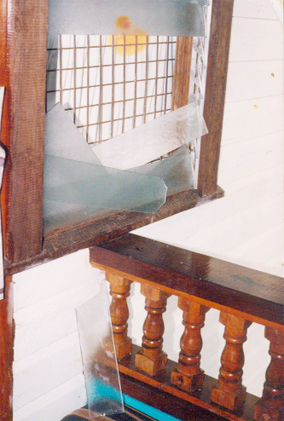Amid a search for alternatives to using mercury to recover gold, the Guyana Geology and Mines Commission (GGMC) is inviting interested medium and large scale mine operators to submit proposals to operate and manage two Knelson concentrator processing plants despite fears they are expensive.
The Knelson concentrator is a gravity concentration apparatus, mainly used in the gold mining industry for the recovery of fine particles of free gold. It does not involve the use of mercury and is said to offer a more efficient method and costs little to upkeep. The GGMC, in an ad in the Sunday Stabroek, said that proposals must be submitted on or before August 31.
Alternatives to using mercury which can harm the environment have gained increased attention recently given the impending US ban on mercury exports from January 1 next year. Under the auspices of the UN, countries are also negotiating a global treaty that would reduce the use of mercury. Local miners have opposed any ban on the use of mercury here and following a meeting with President Donald Ramotar on Thursday, won assurances that there would be no ban and avenues will be explored for viable alternatives.
Before the meeting, president of the Guyana Gold and Diamond Miners Association, Patrick Harding in a letter to Stabroek News said that to date, all of the alternatives to mercury showcased to the local industry, “have been inadequate and are still in an experimental stage.” He said that while they remain willing to work with the GGMC on finding alternatives, “there is little more than a year left and all of the efforts have been and remain experimental.”
Harding said that the alternative methods will not be completed for the end of this year and expressed concern that the flotation project is still experimental and “so far has not proved effective”. Even the GGMC has not taken it past the lab testing stage, he said.
He also pointed out that the Knelson concentrators, bought at around US$500 000, remain in the shipping containers since the start of the year at GGMC’s laboratory site in Linden, while the agency continues to look for a partner to assist them in setting up and running two operations using this system. “This system has already proven too expensive for any local miner,” he said.
Further, Harding noted that the Cyanide Leaching Plants are still to be set up at the GGMC labs in Linden and they are now looking for experts to do this. He noted that when and if the experts are hired they will assist in setting up the plants and start training for GGMC technicians, who, when they have completed their training, will then train miners. “Therefore from all indications so far we have no confidence in these efforts of the GGMC and we are very worried that come 2013, there will be no effective alternative for mercury and we will all have to stop mining,” he said.






